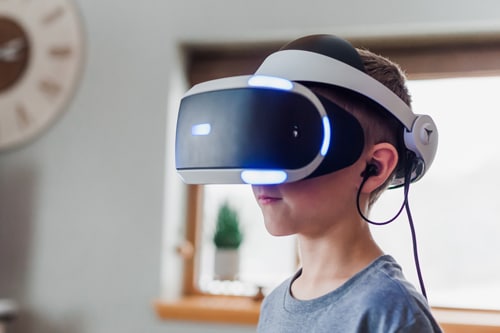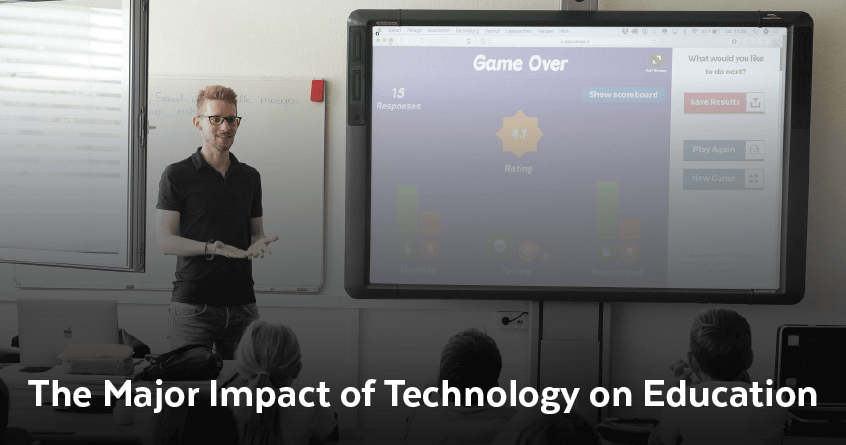The Leading Educational Technology Trends for 2021 and Beyond
The digital revolution has significantly impacted the way we learn. In fact, one of the fastest-growing markets for new technology is education. Grand View Research1 reports that the education market was valued at $76.4 billion in 2019 and will grow at a compound annual growth rate (CAGR) of 18.1 percent from 2020 to 2027.
Education is embracing the digital revolution in a big way. Today’s learning environments strive to be dynamic and creative. To accomplish this, schools and universities rely heavily on digital infrastructure and tools.
Ed Tech incorporates many of the most popular digital devices available on the IoT. Let us take a look at some of the current trends in education technology.
Connected Learning
The traditional teaching model goes like this: the teacher enters the classroom, lectures for about 30 minutes, then the students leave when the bell rings. However, technology has made it possible for teachers and students to stay connected. Devices such as smartphones, laptops, notebooks, and tablets enable teachers and students to interact more often. Pupils can team up, discuss classwork, and solve problems because of this increased connectivity.
Instructors are much more available to answer questions and mentor their pupils. And not only is the class subject taught, but this type of collaborative learning builds the student’s interpersonal skills as well.
Student-Centric Learning
More than ever before, education focuses on the welfare and continual improvement of each student’s learning experience. Some of the primary goals in the education sector are to use digital transformation to help accomplish the following:
- Decrease student dropout rate
- Increase student retention
- Improve student performance
- Reach a broader sector of students
Greater Access to STEM
Schools are particularly emphasizing science, technology, engineering, and math (STEM) curricula. Digital technologies are increasingly being used to tackle subjects like robotics, coding, and programming.
Student Security
Because the coronavirus pandemic has closed schools, K-12 remote learning is the norm in many places worldwide. Vendors are providing schools with free or discounted access to remote learning resources.
With the increased use of Ed Tech, cyber-security and digital privacy for students have become of utmost concern, specifically SaaS architecture and engineering and OAuth risks. There is a strong push to improve existing products’ effectiveness and create new ones to help manage student data and protect their privacy.
Flipped Learning
A new teaching trend is called “flipped learning.” This approach does just as the name suggests by turning traditional teaching methods upside down. In a flipped classroom, pupils use videos and other digital educational technologies at home and then go to their physical classroom to complete their “homework” under a teacher’s supervision.
Augmented Reality
Augmented reality (AR) is one of the hottest technology trends right now. 5G devices and smartphones are on the way and will bring AR to the classroom. AR enhances learning and even provides a student with the opportunity to create their own content.
There are various AR tools and apps on almost any subject, making the academic content immersive and enjoyable. Educational AR technology aims to promote such 21st-century skills as creativity, problem-solving, critical thinking, analysis, coding, and iterative testing.
 Virtual Reality
Virtual Reality
Another immersive technology trend for the classroom is virtual reality (VR). Gone are the days of students sitting passively at desks trying to learn. With VR, students can travel and explore the world. And recent improvements to this technology has made it seem less gimmicky.
Terry Heick, founder, and director of Teach Thought states:
“Through the use of digital technology, virtual realities can be designed precisely for human interaction for very specific reasons to create experiences not otherwise possible.”
Artificial Intelligence
Artificial Intelligence (AI) has gathered quite a lot of momentum and will continue to do so in the future. In a lead-up to a deep-dive on the AI market in the US Education Sector, Research and Markets states forecast for growth at “47.77% during the period 2018-2022.”
Educators use this technology as virtual mentors and teaching assistants to personalize students’ learning processes and improve grading systems.
Big Data
Internet users generate about 205 quintillion bytes of data each day.2 Organizations use big data systems to collect, store, and analyze vast amounts of information to gain valuable insights into their operations. Likewise, educators can use this type of data to discover further just how children learn. The big data technology trend in education is being used to create new teaching models, such as digital learning and customized curricula.
Massive Online Open Courses
Because of the increase of mobile computing devices, along with affordable and reliable bandwidth, the e-learning market and particularly massive online open courses (MOOCS) are positioned to become a multi-million dollar market in coming years. The success of MOOCS has been so dramatic that universities are forging tie-ups and partnerships that make their mainstream program available online.
SCORM and xAPI
Sharable Content Object Reference Model (SCORM) and xAPI (also known as Tin Can). are “communication protocols for tracking learning-related activity. They provide a framework and structure to pass data and information between learning content and technologies.” 3
Both Scorm and xAPI have become dominant standards in the e-learning industry and will continue to have broad adoption.
 Digital Classrooms
Digital Classrooms
The Internet of Things (IoT) is replacing items like chalk and chalkboards, and even pencils in the modern classroom. There are interactive whiteboards, and an ordinary smartphone with an internet connection supplies students with tons of educational information and e-books.
Last Words
The Internet of Things has been a godsend for education. IoT enables cutting edge concepts such as flipped classrooms, online courses, integrated mobile technology, and immersive, creative, and efficient teaching methods. IoT-enabled connectivity replaces pencils, paper, chalkboards, and hard-copy textbooks.
Equally important, IoT is vital to a secure and comfortable school campus environment. It provides necessities like security via smart cameras, climate control through smart HVAC systems, smart lighting systems, and much more.
To read further about Power over Ethernet (PoE) for smart academic institutions, click here.
______________________
1 Grandview Research: Education Technology Market Size Report, 2020-2027

